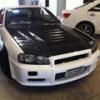Jaycar Boost and Fuel Control
Announcements
-
Similar Content
-
Latest Posts
-
On R32s etc the variable resistor of the TPS is pretty much only for the auto trans CU. The switch is the idle position. Yes, later ones want to see pretty close to 0.45V to declare idle position.
-
By joshuaho96 · Posted
TPS sensor needs to be adjusted such that idle voltage is 0.45V, then relearn the TPS if applicable. From what I recall in the R32 GTST and similar ECUs they care far, far more about the actual TPS closed switch but later models seem to only keep track of voltage. -
What can't be done with a little bit of decking board or similar timber bolted to a hub flange via 2 wheel nuts is not worth talking about.






Recommended Posts
Create an account or sign in to comment
You need to be a member in order to leave a comment
Create an account
Sign up for a new account in our community. It's easy!
Register a new accountSign in
Already have an account? Sign in here.
Sign In Now